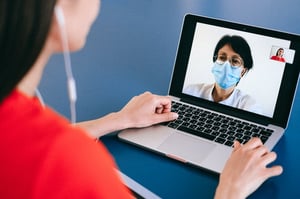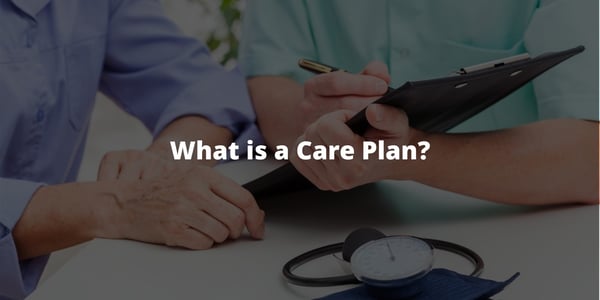Amid the COVID-19 pandemic, it can be challenging to find ways to buy food while staying safe and...
What Is Telehealth? Is It Right for You?
What is Telehealth
Telehealth, the delivery of healthcare services virtually, is an increasingly popular practice that many people are looking at to replace typical in-person delivery. Telehealth can include video conference medical appointments, health apps, and remote patient monitoring. Throughout the last year, people have been forced to schedule telehealth medical appointments due to the COVID-19 pandemic. As many have experienced, this can be a viable option for many, especially seniors, looking forward.
Telemedicine
People often confuse telehealth and telemedicine, but they are two different things. While telehealth is a virtual communication mode between doctors and patients, telemedicine uses technology to deliver care to patients virtually. Therefore, telemedicine is less broad than telehealth because it only refers to remote clinical services.
Remote Patient Monitoring
 Remote patient monitoring (RPM) uses advanced technologies to remotely track vital signs of high-risk patients using cameras and sensors. RPM technologies can collect health data, such as vital signs, blood pressure, blood sugar, heart rate, blood oxygen levels, weight, and electrocardiograms. RPM can lead to the better overall care of patients because clinicians have access to constant live data updates. This makes it possible to better understand the patient’s health in order to administer the best possible care solution.
Remote patient monitoring (RPM) uses advanced technologies to remotely track vital signs of high-risk patients using cameras and sensors. RPM technologies can collect health data, such as vital signs, blood pressure, blood sugar, heart rate, blood oxygen levels, weight, and electrocardiograms. RPM can lead to the better overall care of patients because clinicians have access to constant live data updates. This makes it possible to better understand the patient’s health in order to administer the best possible care solution.
Nearly half of U.S. adults have high blood pressure, being the cause of death for more than half of a million people in the U.S. in 2018. When patients use an RPM monitoring device to measure their blood pressure, this data is received by cardiologists. Access to this data helps cardiologists determine whether a patient needs to make lifestyle changes such as diet, medication, and exercise. If these changes are made early enough, it can help patients avoid developing heart disease or having a stroke.
Modes of Telehealth
Telehealth is delivered in one of two ways; synchronous or asynchronous.
 Synchronous telehealth refers to face-to-face virtual appointments, such as video conferences. All that is needed for synchronous visits is a phone, tablet, or computer with access to the internet and a working camera and microphone. This option helps to maintain a sense of normalcy and connection between patients and doctors.
Synchronous telehealth refers to face-to-face virtual appointments, such as video conferences. All that is needed for synchronous visits is a phone, tablet, or computer with access to the internet and a working camera and microphone. This option helps to maintain a sense of normalcy and connection between patients and doctors. - Asynchronous telehealth refers to a process similar to email, where information can be passed without live communication. The healthcare provider can share medical data with other specialists and the patient through a secured platform.
mHealth (Mobile Health)
There are hundreds of health apps that patients can access, depending on their specialist and conditions. There are apps tailored for specific patient needs such as diabetes management, patients trying to lose weight, medication reminders, and more. Most of these apps help patients schedule appointments, track medications, access medical records, and more. Some of the most popular health apps today include MDLive, LiveHealth, PlushCare, Doctor on Demand, Amwell, along with many others.
Pros of Telehealth for Seniors
Telehealth offers many benefits to seniors, including:
- More accessible healthcare
- Avoid unnecessary trips to the hospital
- Decrease travel and medical costs
- Increased access to doctors and specialists out of the area
- Avoid long wait times
- Avoid exposure to germs and sickness in clinics
Cons of Telehealth for Seniors
While telehealth does offer many benefits, it also has a few disadvantages, including:
- Virtual appointments may cause doctors to miss symptoms for proper diagnosis and treatment
- Requires access and ability to use technology
- Insurance coverage may arise as an issue
- Loss of in-person interaction with healthcare workers
To ensure wide-range telehealth access to patients, healthcare providers can communicate to patients via video conference, phone call, email, text message, and other remote channels. As technology continuously advances, telehealth will most likely become a norm for many seniors in the future, especially those living in long-term care facilities, suffering from low mobility, and anyone seeking the care of non-local doctors and specialists.
Related Content:






